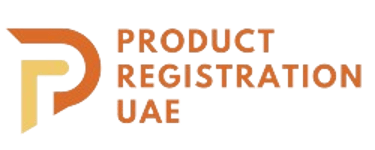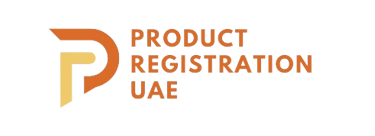Label Design UAE: Avoid Montaji/MoHAP/ECAS Delays
Label design UAE made clear—avoid layout, font, icon, and barcode mistakes that trigger Montaji/MoHAP/ECAS delays. Get a pre-screen before submission.
11/10/2025


The Label Design Traps That Stall UAE Product Registration
Design isn’t decoration in the UAE, it’s compliance. Reviewers at Dubai Municipality (Montaji), MoHAP, MoIAT (ECAS/EQM), and QCC don’t only check what you say; they check how it’s presented on the pack.
Fonts, contrast, icon placement, barcode quiet zones, and multi‑language layout can all slow an otherwise solid dossier.
This guide pinpoints design‑driven mistakes that trigger queries, relabels, and missed launch windows—and shows what a compliance‑aware layout looks like.
Why does design (not just content) get files rejected
Readability is a standard, not a taste. If mandatory text can’t be read at arm’s length under normal lighting, expect comments. Reverse text on busy images, ultra‑thin fonts, and low‑contrast palettes are common culprits.
Panels are scanned in a predictable order. Front (principal display) is scanned for name, net quantity, key claims, and age/allergen cues; information panel is scanned for ingredients, usage, warnings, dates, manufacturer/importer, and Arabic elements.
Claims must sit with their qualifiers. If a bold claim is on the front while the qualifying language hides on a side seam, reviewers will ask for relayout or toned‑down copy.
The eight high‑risk design triggers we see weekly
1) Fonts & contrast. Minimum sizes aren’t the only issue—stroke weight and color contrast matter. Avoid hairline fonts, grayscale on tinted backgrounds, and reverse text over photography.
2) Panel hierarchy. Visually overwhelming branding can push mandatory items off the principal display panel. Keep product name, net quantity and key regulatory cues dominant and consistently placed.
3) Icons & pictograms. Homemade nutrition, eco or “free‑from” icons mislead. Use only recognized symbols; avoid look‑alikes for UAE Mark, recycling or halal unless actually authorized.
4) Multi‑language stacking. Arabic and English must align in meaning and prominence. Watch for truncated Arabic due to tracking, orphans/widows, and lines that become illegible after translation expansion.
5) Claims proximity. “Clinically proven,” “whitening,” “immune support,” or “kills 99.99%” must be paired with the correct qualifiers and evidence references in the same visual field.
6) Allergen & ingredient blocks. Wrapping long ingredient lists around curves, breaking punctuation, or splitting allergens from the list creates readability risk. Use clear blocks with consistent punctuation and Arabic INCI/terms.
7) Net quantity & units. Position and visibility must follow category rules (e.g., mL, g, wipes count). Don’t bury net quantity in a corner, shrink it, or mix unit systems.
8) Barcode quiet zone. Artwork often crowds the GS1 area. Preserve clear margins on all sides, print at sufficient resolution, and avoid placing codes on tight curves, glossy glare zones, embosses, or seams.
Dubai Municipality / Montaji realities (design edition)
“Readable” means reproducible in print. What passes on a bright monitor can fail on a matte laminate or textured substrate. Always proof on the actual material and size.
Comments arrive as design notes, not legal citations. Expect requests like “increase contrast,” “relocate claim near qualifier,” or “Arabic panel not equivalent”—each can force a layout round.
GS1 & traceability: artwork rules designers miss
The quiet zone is part of the barcode: no borders, crop marks, icons, or textures intruding.
Curvature, glare, and laminate. On small bottles or glossy pouches, scanners struggle; widen bars, avoid tight radii, and control finish.
Don’t rotate without reason. Sideways codes reduce scan reliability in retail and at inbound inspection.
Proof before print: a compliance‑aware workflow
Design risk scan. Check hierarchy, contrast, panel completeness, claim proximity, Arabic parity, and barcode placement against the intended authority route.
Regulatory redline. Annotated artwork layers call out required changes without touching the brand tone.
Print‑ready handoff. Supply outlined type, packaged fonts, linked images, color profiles, and GS1 verification so printers and reviewers see the same thing.
When to rework vs rebuild
Rework when legibility fixes, panel swaps, or barcode moves solve comments without breaking brand grid.
Rebuild when claims shift category (e.g., cosmetic → therapeutic), when Arabic parity cannot be achieved within the grid, or when net quantity/mandatory items cannot fit at required prominence.
Submission‑safe deliverables your designer should export
Provide editable artwork (AI/INDD + PDF/X), outlined text versions, font list, color profiles, linked images, GS1 verification, and a panel map showing where each mandatory item sits in Arabic and English.
FAQ
What’s a safe minimum font size for UAE labels?
As a practical floor, keep body text at ≥7–8 pt for Latin and ≥8–9 pt for Arabic at actual print size. Use solid contrast (avoid thin/light weights, reverse text over photos), and make warnings/net quantity larger for a quick scan.
How should Arabic and English be laid out?
Maintain meaning and prominence parity: same claims, same qualifiers, and equivalent placement/size. Respect right-to-left flow for Arabic, avoid truncation/widows after translation expansion, and keep both languages within the same visual field when they relate to the same claim.
Where must the net quantity and key cues sit?
On the principal display panel, near the product name, is sized for quick readability. Use correct units (mL, g, count), don’t bury it near edges or under graphics, and keep units consistent across variants and listings.
What about icons, seals, and pictograms?
Use recognized symbols only and authorized marks (e.g., UAE Quality Mark/EQM, halal) when you actually qualify. Lifestyle or eco icons are fine if not misleading and don’t displace mandatory items. Never imitate regulated marks or suggest approvals you don’t hold.
How close must claims be to qualifiers/evidence?
Keep claims and qualifiers together on the same panel/viewport—e.g., “kills 99.99%*” immediately followed by the asterisk qualifier and any evidence cue. Don’t push qualifiers to a side seam or a different panel.
Barcode placement rules designers miss?
Preserve the GS1 quiet zone around the code (clear margins on all sides), print at high resolution, and avoid tight curves, seams, embossing, and glossy glare. Keep the code upright if possible and out of heavy textures; we verify scanability before print.
Next steps
Share your draft artwork for a confidential label‑design risk screen. We’ll validate hierarchy, Arabic parity, claims proximity, and barcode placement so your file passes on the first review.
Have a draft pack or marketplace images ready? Send the artwork and SKU list—our rapid label‑design pre‑screen will flag risks and show precisely what to fix.
Contact us or use the chatbot in the bottom right corner.
Further reading:
Mastering UAE Product Labeling (Part 1): mandatory fields, hierarchy, panel mapping.
Arabic Labeling Requirements (UAE): Arabic parity, prominence, regulator-grade checks.
What Authorities Check on Labels: reviewer checkpoints and evidence to avoid rework.
Explore UAE Product Registration Strategy for Faster Launches for the full approach.


